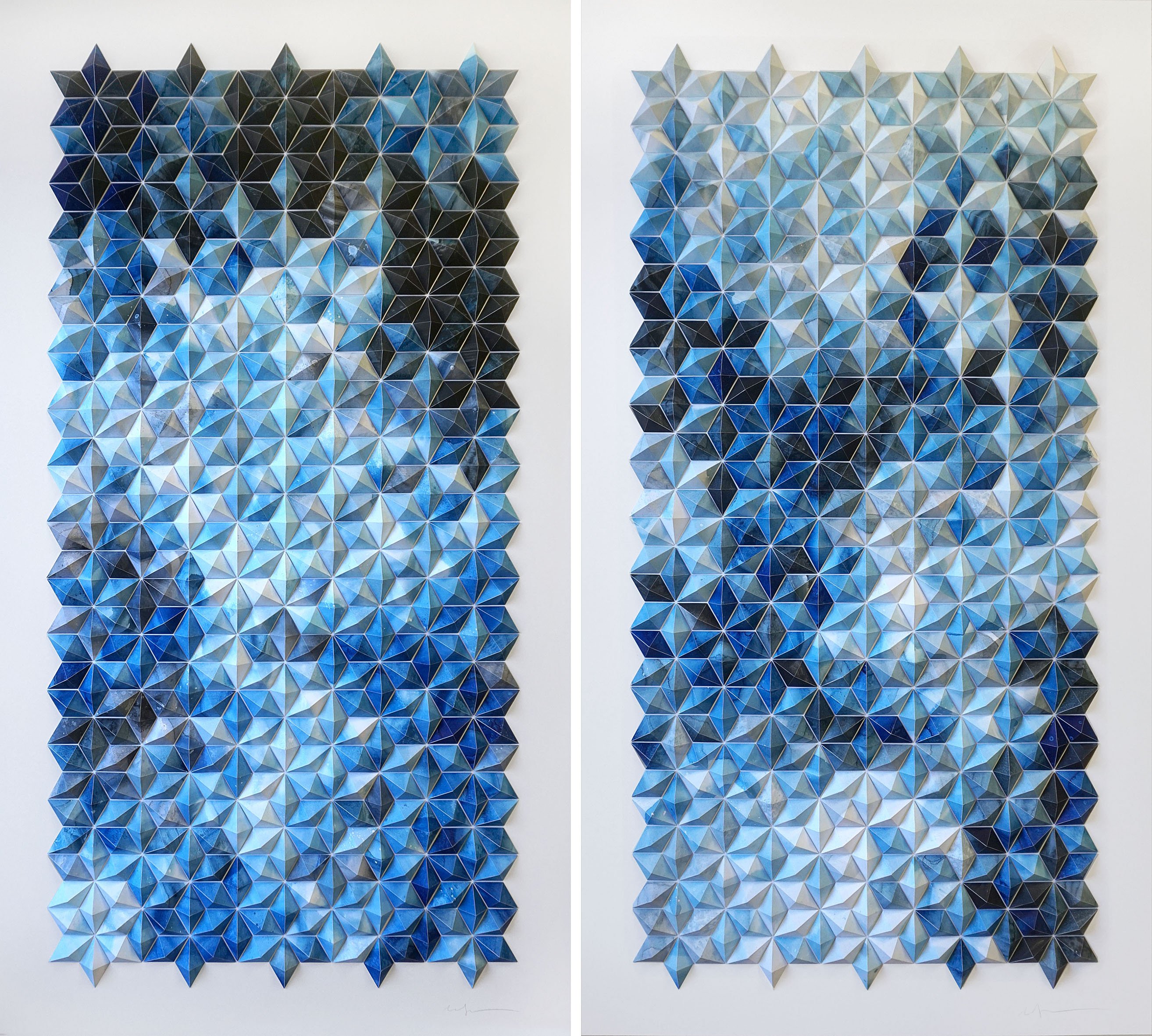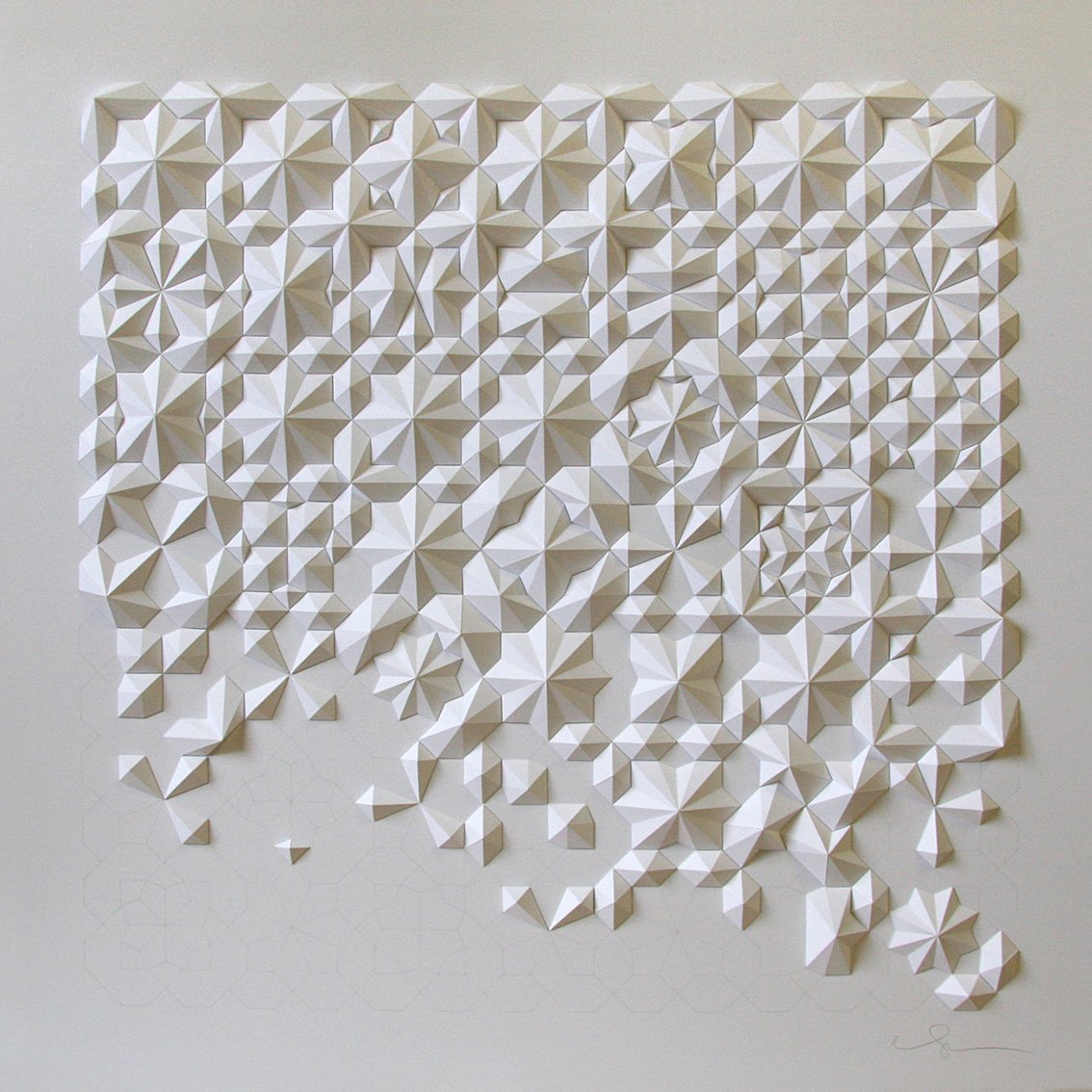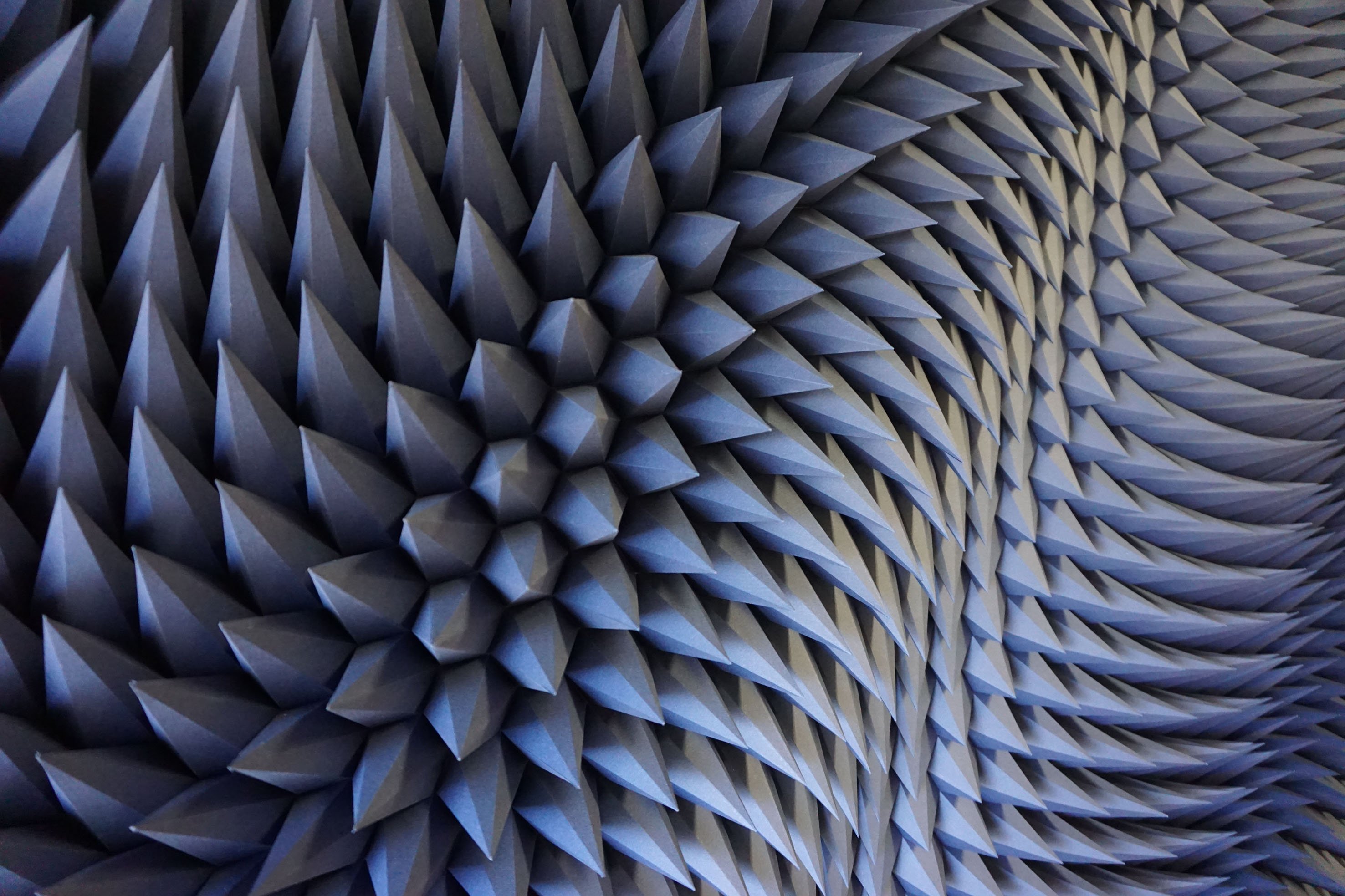Matt Shlian (b. Connecticut,1980) is a paper engineer. More than that—Shlian is a paper artist. His work combines an astonishing mastery of the material with the mathematical precision of the plane to create geometrically inspired objects made from folded and glued paper tiles. His work is based primarily on the Kirigami technique, a Japanese art form that uses both folding (Origami) and cutting to work the material paper. The artist is incorporating the discipline into his collaborative work with scientists at the University of Michigan, using paper to help them visualise micro-folds in nanotechnology projects.
Shlian’s unique pieces find inspiration in a wide variety of sources, from the patterns of Islamic tiles to architecture, music and biomimetics. The result is a myriad hypnotising rhythmical surfaces and kinetic sculptures. Beautiful depictions of geometric patterns that seem to come to life thanks to the subtle movement of light falling on the various planes of the polygons that make up the piece. There is a poetry to the shapes, inviting viewers to almost caress the vertices with their fingertips. Delicate volumes that you could gaze at for hours, as if strolling through clouds.

We interviewed Matt to find out more about his creative process and how his artistic expression’s geometric inspiration has led him to work closely with science, a field that is often wrongly positioned as diametrically opposed to art. Matt Schlian shows us that both science and art are really the product of the same principle: questioning.
Your training is in the more artistic field of arts and crafts, but you describe yourself as a paper engineer. Do you feel comfortable with a description that’s more technical than artistic? Would it not be more accurate to call you a Kirigami artist?
“I really don’t care about labels. Kirigami is as specific as engineer. A ‘paper engineer’ is someone who designs pop-up cards and mobile paper art. I didn’t invent the term. My experience is in paper engineering. To be honest, I’m just an artist who uses paper as a medium.”
Your work is based primarily on geometric figures with various inspirations; do you think it is this characteristic of your work which has led to you collaborate, almost naturally, with science?
“Possibly. Paper is a material with many uses, what happens is that when you work at micro and nano scale with flat materials, working with paper at human scale makes sense, it makes it easier to understand.”
I’m very interested in your statement, “If I can completely visualize my final result I have no reason to make it”… a statement that, in my view, gives you a great deal of freedom, a more philosophical approach to art, in a way. Is your curiosity strong enough for you to create without boundaries, without a plan?
“If I’ve understood your question correctly, I think it is; I think curiosity is the energy that’s needed for creation. I don’t look at one specific thing and make a piece about it. My work is not didactic. I am not seeking to explain or present one specific idea in my pieces. I start projects with a vague idea of how they will look. Along the way something happens (a mistake, a new idea, a divergent thought…) I simply to try to keep my eyes open while I work and I try to work with the materials, not against them. If I know where I’m going I tend to get bored. I prefer to devote myself to the process.”

Do you see your relationship with science as a limitation, one that takes your expression to another level?
“I think limitations are good in artistic creation and that the enemy of art is the absence of limitation. I don’t see science as a limitation at all. I might restrict the colour, the shape or something else as my limitation, but inspiration cannot and must not be limited.
The best work in my opinion is being done in the fringes, in the nebulous space between disciplines, between science and art, for example.”
Is your work in the studio done on the basis of a different creative process to the one you adopt when collaborating with science or working with brands, for instance?
“It’s the same process and it’s not. My sensitivity and my way of ‘ignoring’ what has already been done underpins it. It’s true that, when you work on commission, the client usually has a specific need and meeting this specificity influences the creative process. However, every project, whether related to scientific research or based on purely aesthetic or sensory notions, has its own journey and creative process. Much like with the meaning of a piece, I don’t want to repeat a method again and again. Evidently, I work according to certain themes and the variations are important, but generally I don’t approach everything from the same angle.”
Science aside, would you like to work or collaborate with other artistic disciplines like fashion, furniture design, architecture, jewellery or theatre, for example?
“Yes. I would love to design a building or a clothing range. I’m always open to collaborations if the right framework is there, yes! I’m a curious person by nature, so exploring new areas of expression is always in my sights.”
What are you working on right now? Can you tell us what your next project is?
“This is my schedule this month: I’m working with the Tamarind Institute to make a 12-foot piece in Albuquerque. And also a series of limited edition copies (https://tamarind.unm.edu). I have three big commissions on the go, one in Boston, another in Connecticut and a third in Chicago. This afternoon I’m assembling a customised piece to install this week for Oculus. I’m also thinking of ideas for a programme that I’ll have next year at KITH in New York.”
Will we have the chance to see an exhibition or the work of Matt Shlian here in Europe sometime soon?
“Possibly. Nothing has been confirmed, but I tend to be active on social media… Instagram / Facebook / Twitter, as soon as it’s arranged I’ll let you know ;)”
Matt Shlian, a universe of meticulous superimpositions of an organic and delicate sensitivity — in the image and likeness of his works— his imagination seems to have no end!


